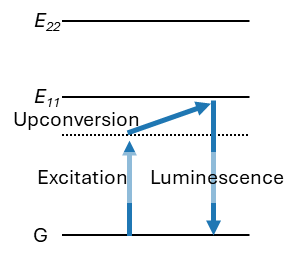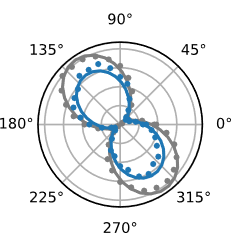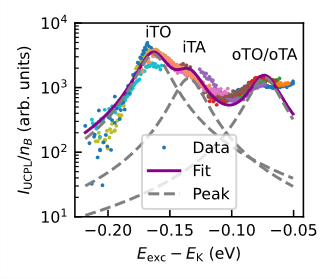Research:Intrinsic process for upconversion photoluminescence via K-momentum-phonon coupling in carbon nanotubes
Photon upconversion is a nonlinear optical process where low-energy photons are absorbed and re-emitted as higher-energy photons. This phenomenon has important applications in fields such as telecommunications, advanced photonics, and renewable energy. Upconversion photoluminescence in single-walled carbon nanotubes is a particularly promising area of research due to its potential for efficient light conversion.

We investigate the intrinsic microscopic mechanisms of upconversion photoluminescence in air-suspended carbon nanotubes, a system that is considered to be defect-free. One of the most notable findings of this study is the highly anisotropic response to the excitation polarization, which underscores the intrinsic nature of the upconversion process in pristine carbon nanotubes. This anisotropy reflects the one-dimensional characteristics and highlights the role of intrinsic exciton-phonon interactions in driving upconversion photoluminescence.

Upconversion photoluminescence and photoluminescence measurements are conducted, which show that the upconversion photoluminescence arises from K-momentum phonon modes, as confirmed by upconversion photoluminescence excitation spectra. We develop a second-order exciton-phonon interaction model, which reproduces the phonon energies and relative amplitudes observed in the upconversion photoluminescence excitation spectra.

This work highlights the fundamental role of resonant exciton-phonon coupling in carbon nanotubes and provides a new framework for understanding upconversion processes in carbon nanotubes. These findings have significant implications for optothermal technologies in the near-infrared range, where engineering the excitation pathways could lead to enhanced performance.
To learn more about this work, please refer to
Intrinsic process for upconversion photoluminescence via K-momentum-phonon coupling in carbon nanotubes
Phys. Rev. B
110, 155418 (2024).
![]()
RIKEN Research Highlight: "How carbon nanotubes give out more than they receive"